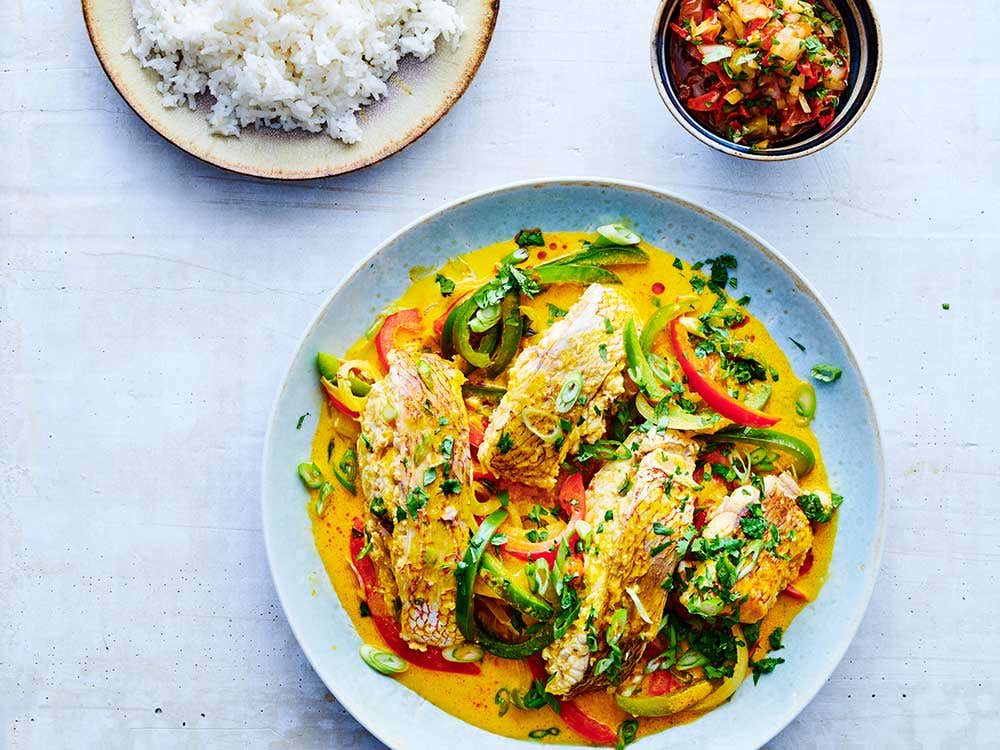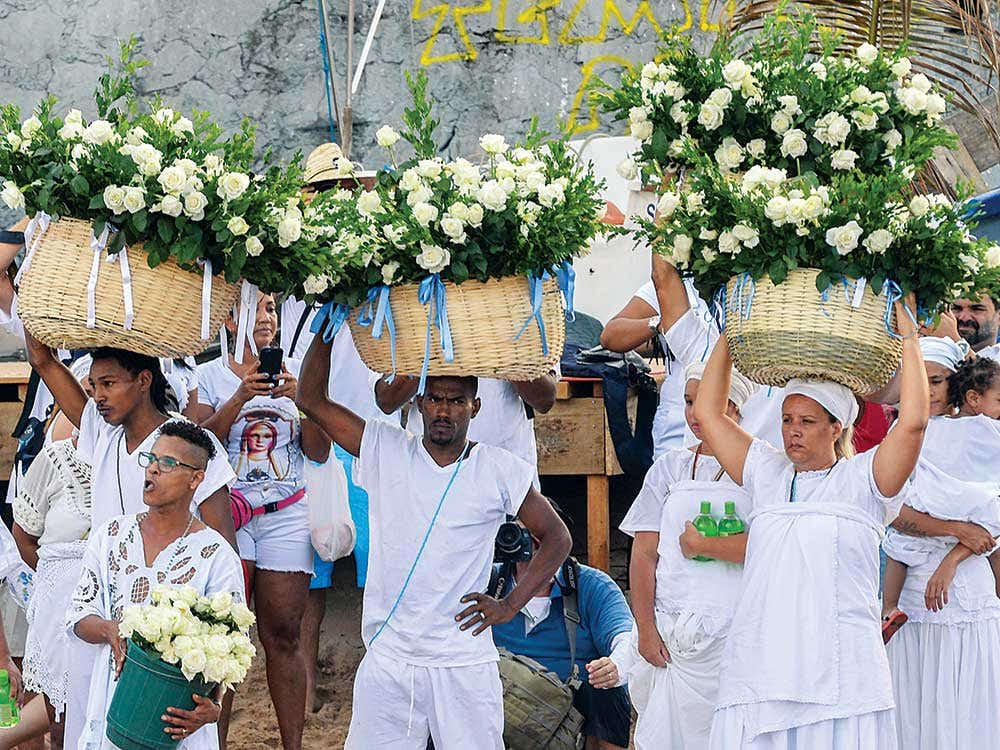
Inside A Raucous Brazilian Sea Goddess Festival
In Salvador, Brazil, a festival honors the sea goddess Iemanjá, ensuring that there will always be an abundance of fish
It’s not quite 4:30 in the morning on Friday, February 2, but the Rio Vermelho neighborhood of Salvador, the capital city of Brazil’s Bahia state, is already buzzing. Revelers, dressed mostly in white, stream along the street parallel to the beach, some still drunk from the night before, others struggling to wake up. In the dark, streetlights reveal pop-up booze stands hung with lemon-yellow Skol beer ads, and stalls selling roses and carnations and lilies—flowers enough for a thousand weddings.
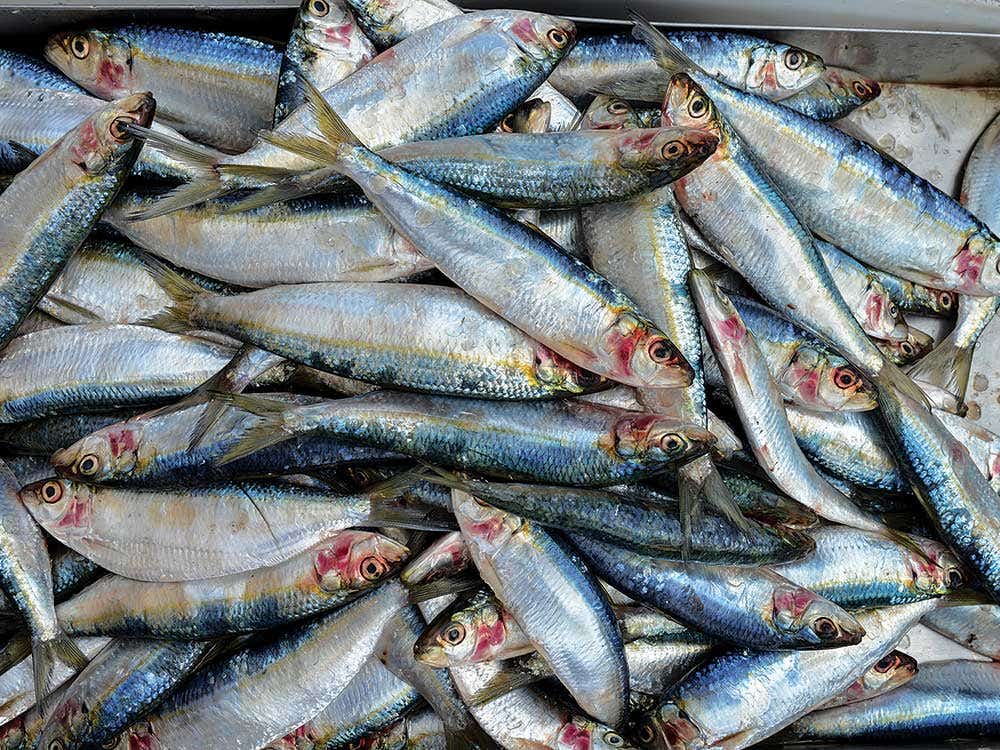
Down by the beach, a crowd has gathered around a makeshift pagoda, where two men in shorts are pounding on 3-foot-tall drums, and another is striking the cowbell-like agogô with a stick. A dozen old women in satin blouses and ankle-length hoop skirts, heads swathed in kerchiefs, sing and dance rhythmically in a large circle, bare feet shuffling in and out. The citrusy scent of the pitanga herb hangs strongly on the air, intermingling with smoke from the occasional fireworks.
Everyone knows Brazil likes a party, but when it comes to Iemanjá, the goddess of the ocean and patron spirit of fishermen, this town doesn't fool around. Brazil's oldest city, Salvador served as the main disembarkation point for the 5 million slaves brought to labor on the former Portuguese colony's sugar and tobacco plantations between the 16th and 19th centuries. A vibrant African culture remains intact, including in the form of candomblé, a religion involving the worship of various orixás, or divine beings. Iemanjá—whose name comes from the Yoruba yéyé omó ejá, or "mother whose children are fish"—is considered matriarch of them all and the source of all fertility, love, and sexuality. Her festival, when local fishermen give thanks for the income and sustenance she provides, is one of the most anticipated events of the year.
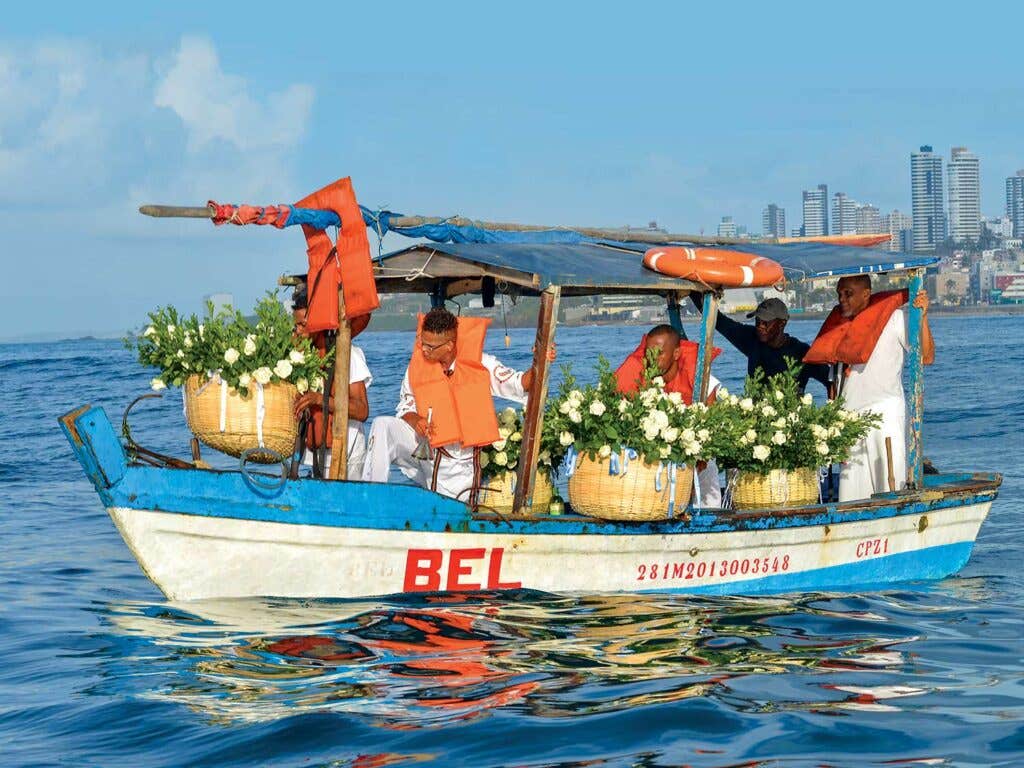
Already, a long line of the flower-bearing faithful has formed in front of the Casa de Iemanjá, a blue-and-white-painted temple fronted by a life-size sculpture of the mermaidlike deity, done up in seashells and shards of mirror. (Candomblé was long condemned by the Catholic Church, forcing its adherents to conceal their symbols inside those of the dominant religion; thus Iemanjá’s many parallels to the Virgin Mary.) Right about now, across town at the Mercado do Peixe, a concrete building painted cantaloupe orange that sits at one end of the sprawling São Joaquim market, the city’s fishermen are returning to harbor with the morning catch in their brightly painted wooden boats. They’ll be throwing back beers at some of the market’s pocket-size bars as soon as they’ve unloaded their haul.
As the queued devotees reach the Casa de Iemanjá, they hand off their stems and bouquets to an attendant, who incorporates them into giant arrangements bursting with roses and baby's breath. The baskets will eventually be taken to the water's edge and transferred to boats that will carry them out to sea. (Wealthier worshippers will hire their own vessels to deliver their offerings themselves.) Drums rise from every direction, as groups from various terreiros, or places of worship, arrive from around the city, singing, swaying, and bearing flowers and small blue statues of the beloved Iemanjá.
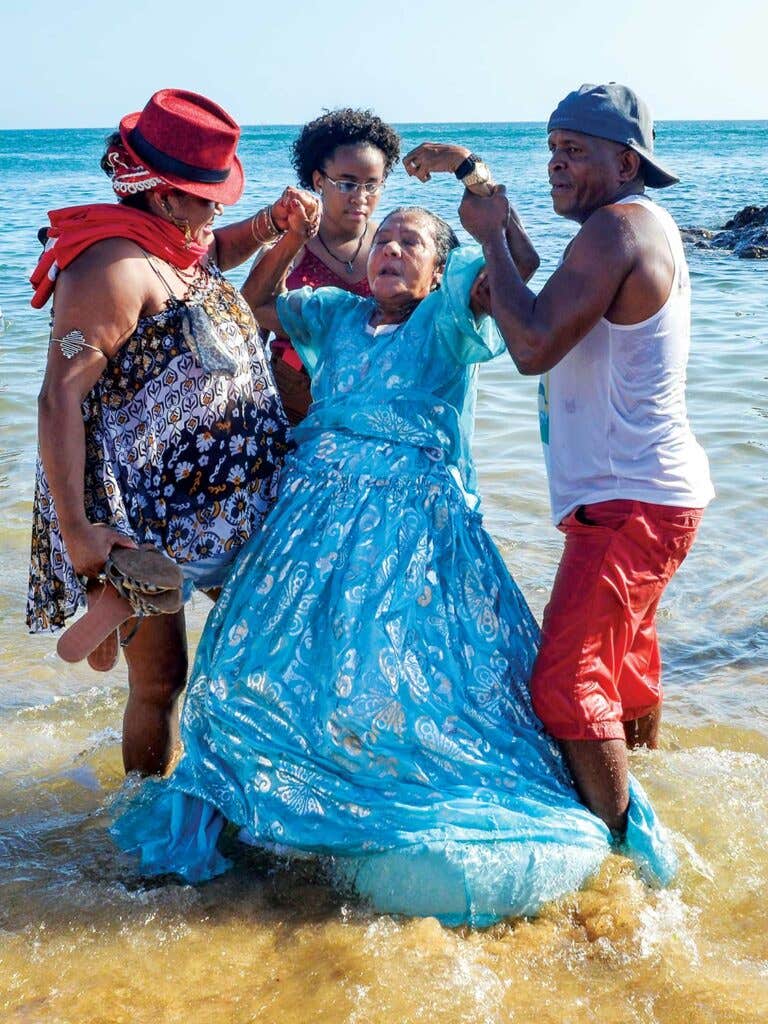
By 5:40, yellow patches of light have begun to appear over the silver-gray water, and more people are making their way toward the beach, some dressed as if for a fancy party, others in ragged shorts and sneakers. Several stop to buy cups of mingau, the ritual hot sweet corn or tapioca mixture affiliated with the sea goddess, dispensed from silver thermoses by mobile vendors. Teenage girls wander by, cheekbones ablaze with aquamarine glitter. Crowds gather around groups practicing capoeira, a sort of slow-motion martial art crossed with dance. Down by the water, people dig small holes in the sand and set blazing white candles inside. More clutches of old women in lace finery chant and sway as foamy water laps at their ankles. The hours-long drumming and hypnotic call-and-response—not to mention the copious amounts of alcohol consumed on a festival day like this—often conspire to induce a trancelike state in the worshippers, who are said to be incorporada, or possessed by ancestral spirits. Some might become so far gone they’ll have to be dragged away by a friend. The putt-putt of motors, as small boats begin to make their way out to the open sea, is punctuated by the deafening pop of firecrackers. Roses bob in the distance like so many ducklings on the waves.
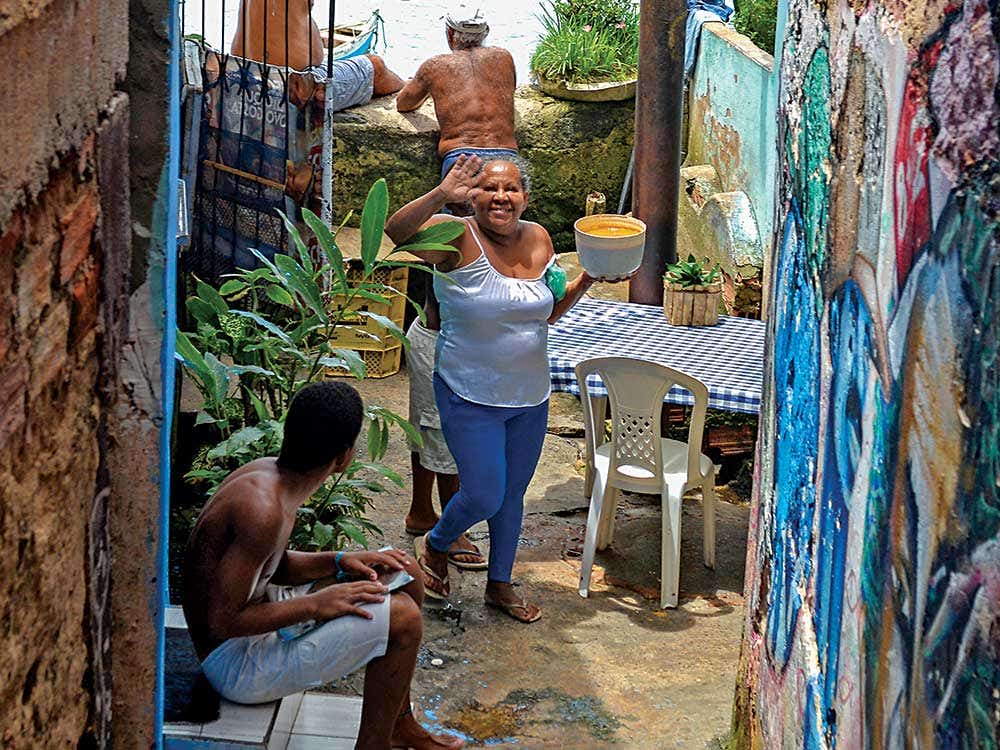
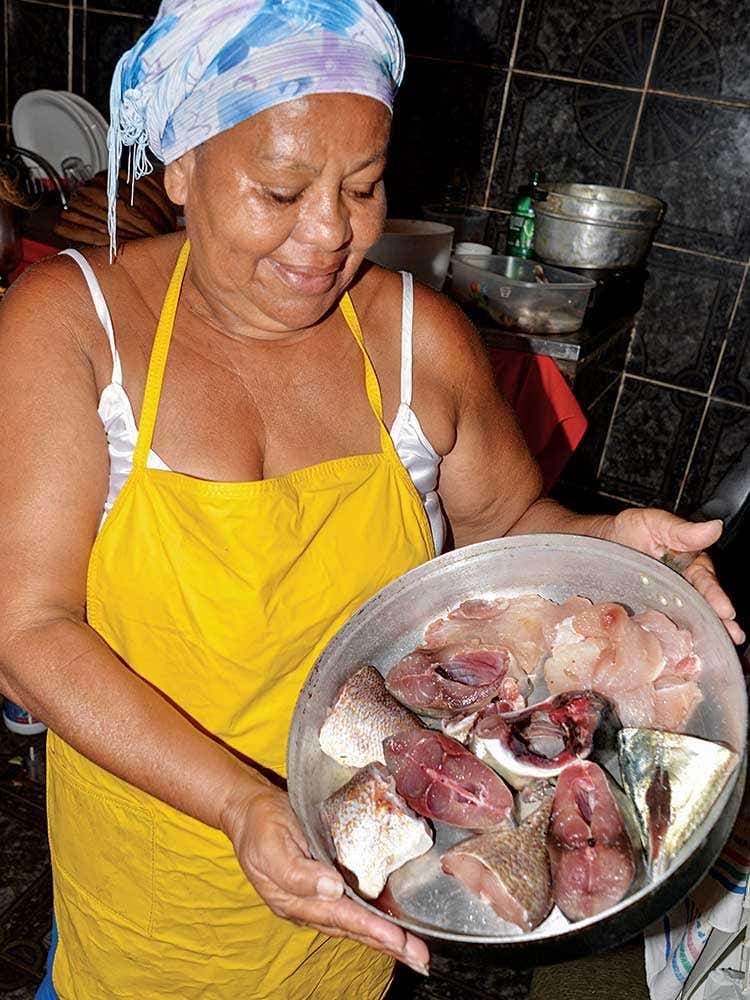
Just as music, dance, and capoeira are central to candomblé, so too are certain foods. Fiery-colored palm oil, which arrived with the slaves and is known here as dendê, takes pride of place, as the symbol of blood and the life force of the orixás. While crossing over the Atlantic, women captives would have been charged with pounding the bright orange fruits to extract oil to feed other slaves. Devotees of candomblé are known not just as povo do santo, or people of the saints, but also as povo de dendê. In 1802, a Portuguese visitor to Salvador complained of "groups of black women" selling "insignificant and vile" fare on the streets: "carurú, vatapá, acarajé, and ubobó," all based on palm oil, "the essential seasoning in the greater part of black cuisine."
Today, the city's baianas, local women decked out in colorful head wraps and lace blouses, serve those beloved dishes from stalls around town. Among the most traditional is acarajé, deep-fried bean cakes made from the black-eyed-pea-like fradinho bean. The crisp-on-the-outside cakes get sliced open and slathered with homemade hot sauce and vatapá, a dense, pale-orange paste made from dried shrimp, onions, coconut milk, cashews, peanuts, and palm oil. On the "street of acarajé," an alley tucked into São Joaquim, shelves display bottle after bottle of persimmon-hued dendê, and vendors' trays are mounded with tiny brick-red prawns, white fradinho, and inch-long green and red malagueta chiles.
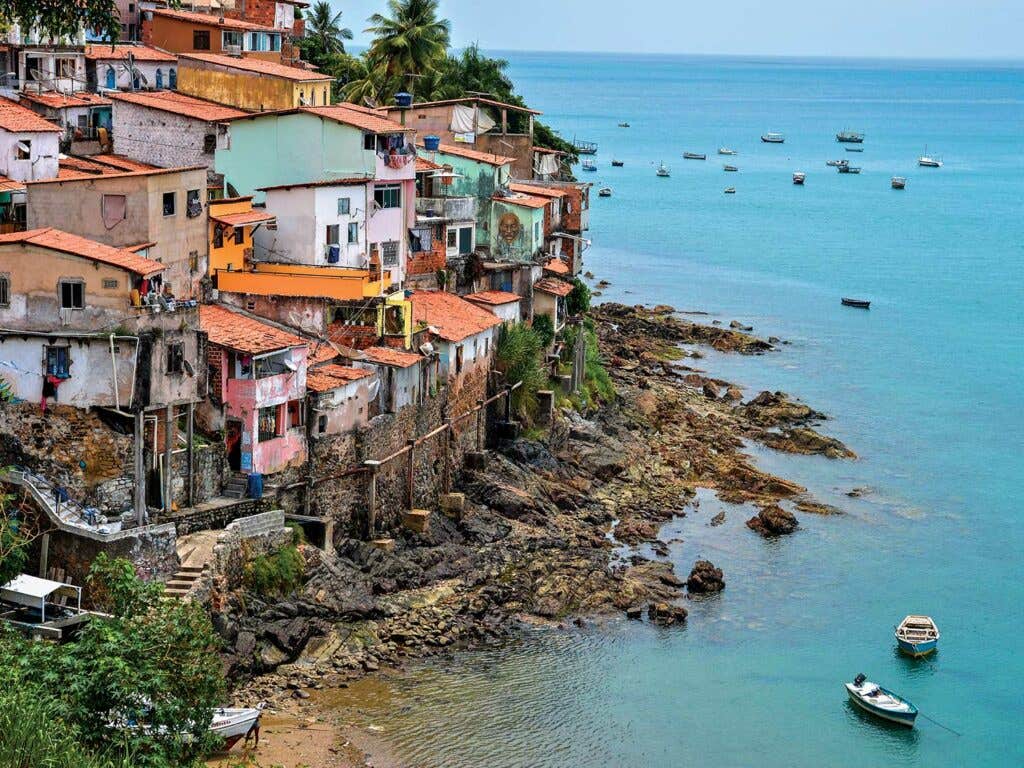
Moqueca, a hearty, tomato-tinged fish stew, reigns supreme in seaside Salvador, and there are few better places to sample it than at the open-air restaurant run by self-taught cook Suzana de Almeida Sapueria out of her home. Located down a steep alley, Sapueria's place sits among an assemblage of terra-cotta-roofed houses tumbling down to the sea. The door to her kitchen is bracketed in graffiti—a voluptuous Oxum, goddess of fresh water, on one side, and a green-haired Iemanjá on the other. Sapueria's fisherman husband will often return in the morning bearing the basis for her meals. She serves her dendê- and coconut-milk-rich moqueca alongside pirao, a simple porridge made from manioc flour and more palm oil. "If you don't have dendê," says the 62-year-old, who goes through a liter of the stuff each day, "you don't have a festa."
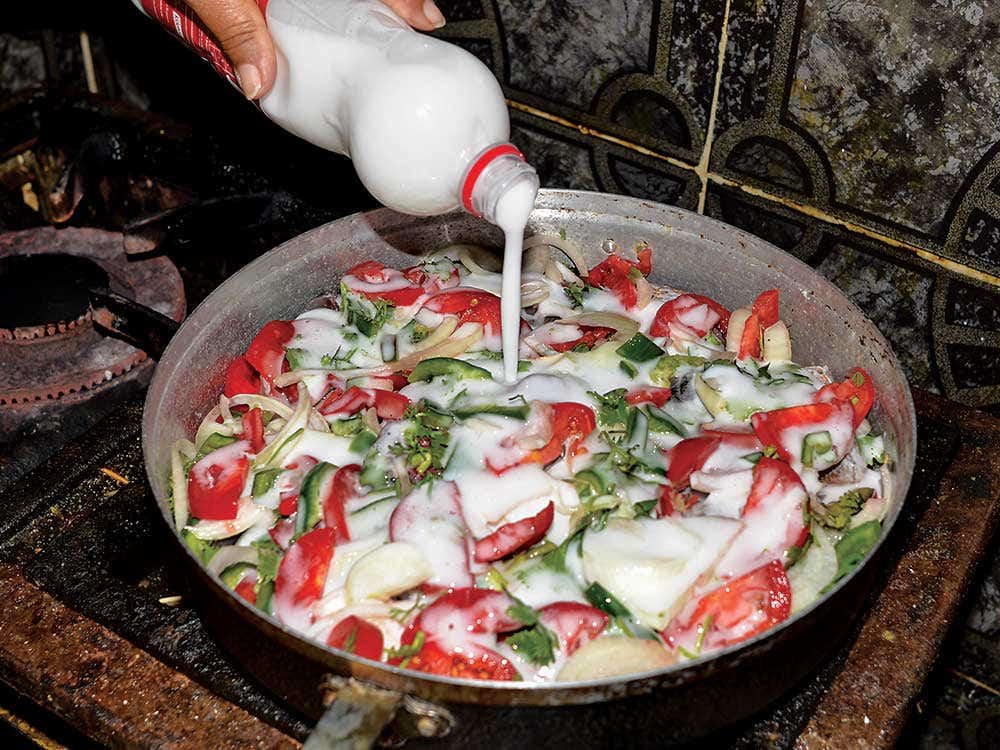
By late afternoon, the party at Rio Vermelho is raging, the beachside bars exploding with merrymakers, the line for the Casa de Iemanjá extending for what must be a mile. On the sand, men in skimpy bathing suits dance with women in halter tops, as kids splash in the waves. Servers wander among the revelers bearing trays of fried whole fish, accompanied by hunks of roasted yam and white rice. Seated in the corner of a crowded shack given over to the mães de santo, or priestesses, is 73-year-old Mãe Pel. A few days earlier, she’d shown some visitors around her homecum-terreiro, with its various outbuildings and shrines—incorporating conch shells, drums, beaded necklaces, incense, bottles of homemade cachaça, ceramic statues, and more—and explained that she has served as an intermediary to the orixás since the age of 15.
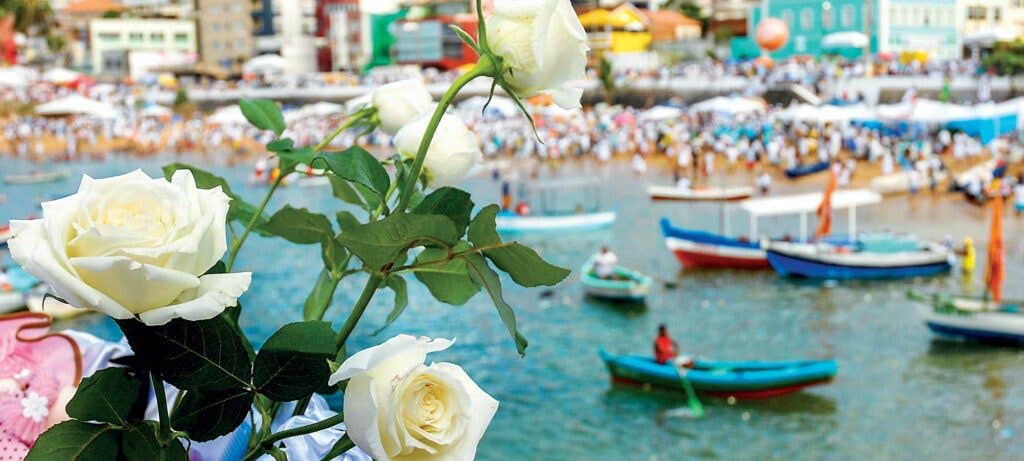
Opening a rattan bureau, she’d fingered some of the outfits inside: elaborate white dresses, but also surprises such as a fringed brown-suede vest with matching pants. Depending on the festival, she’d explained, she’ll take on the identity of a different orixá. Though not normally a drinker, she imbibes on festival days as a means of accessing those figures. A framed photo showed Pel in a sailor’s hat and blue-and-white-striped shirt, wielding a large bottle of dark liquid. The seaman, Marujo (a sort of land-based deity), likes rum and red wine, apparently, while some of the others are partial to whiskey or champagne. Another photo captured an unrecognizable Pel with teased-out hair and crimson lipstick, sporting a short sequined dress. It had been taken just four years earlier, on the occasion of the festival of an orixá associated with promiscuity. “When I’m all dressed up,” she’d explained, “you’re not going to guess that I’m 73.” And when the festas are over? She doesn’t remember a thing.

Now Pel sits dwarfed by the voluminous layers of her blue satin dress. Devotees approach one by one, kneeling before her and kissing her hands as she variously moans, slaps her chest with open palms, stares intently out of milky blue eyes, and hugs her devotees tightly to a sweat-drenched bosom. Whether drunk or possessed or both, she doesn’t remotely resemble the Mãe Pel of a few days earlier. Though she has never learned to swim, Pel had said that, when possessed by Iemanjá, she descends far beneath the waves. “When I’m at the high sea, Iemanjá does what she wants with me.”
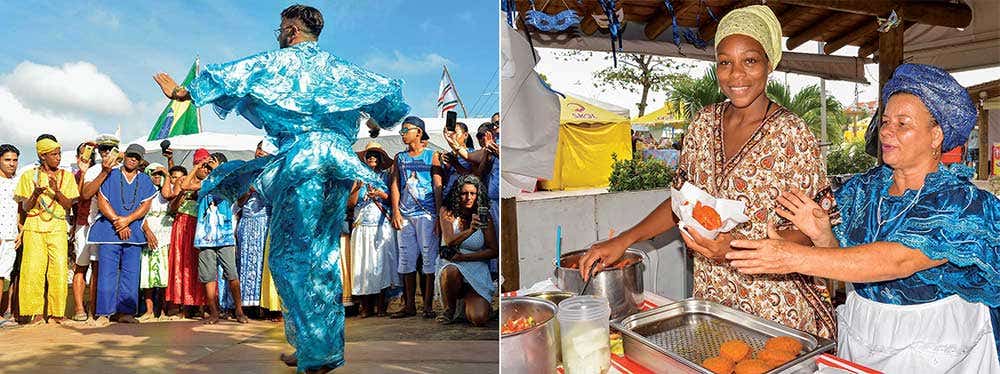
Eventually a young man leads Pel from the shack and down to the water’s edge, where a group of fishermen help her wade out to one of their simple boats, her dress ballooning out around her. One of them lifts her bride-over-threshold style and deposits her on a boat bench. She waves her hands lazily in a way that may or may not be intended to signify goodbye, and disappears toward the horizon. Twenty-five minutes later, the boat resurfaces with a drenched, kerchief-less Pel, whose long, sodden hair clings halfway down her back. A fisherman and two women half-carry, half-drag the septuagenarian back across the sand, as her legs buckle beneath her. The crowd cheers for her safe return, for the wonder that is the ocean, and for another year of plenty, by the grace of her bounteous depths.
Bahian Palm Oil
Coastal Bahia is among the few places in the New World that’s home to dense natural stands of African oil palm trees. The kernels from the fruits, which were brought over on slave ships in the 16th century, eventually found their way into the ground. Locals still cook with the floral, saffron-red oil, and cultivate, harvest, and extract it manually in the tradition of their ancestors.
Palm oil gets a bad rap because of the deforestation its production has caused elsewhere, but the artisanal oil used in Bahia is of a different sort. The biodiverse landscapes here—incorporating manioc and other crops close to the ground, and oil palm, mango, and other trees reaching for the sun—are a dramatic contrast to the oil-palm monocultures common across Indonesia and Malaysia (and, increasingly, Brazil and parts of Latin America). Consumed in its original form—as opposed to the refined, bleached stuff that makes its way into junk foods across the planet—this dendê is rich in flavor and in vitamins A and E. According to Alicio Charoth, a 57-year-old chef from Salvador, “It’s symbolic of the Bahian people and our culinary tradition—an example of resistance, and a break with those who colonized us.”
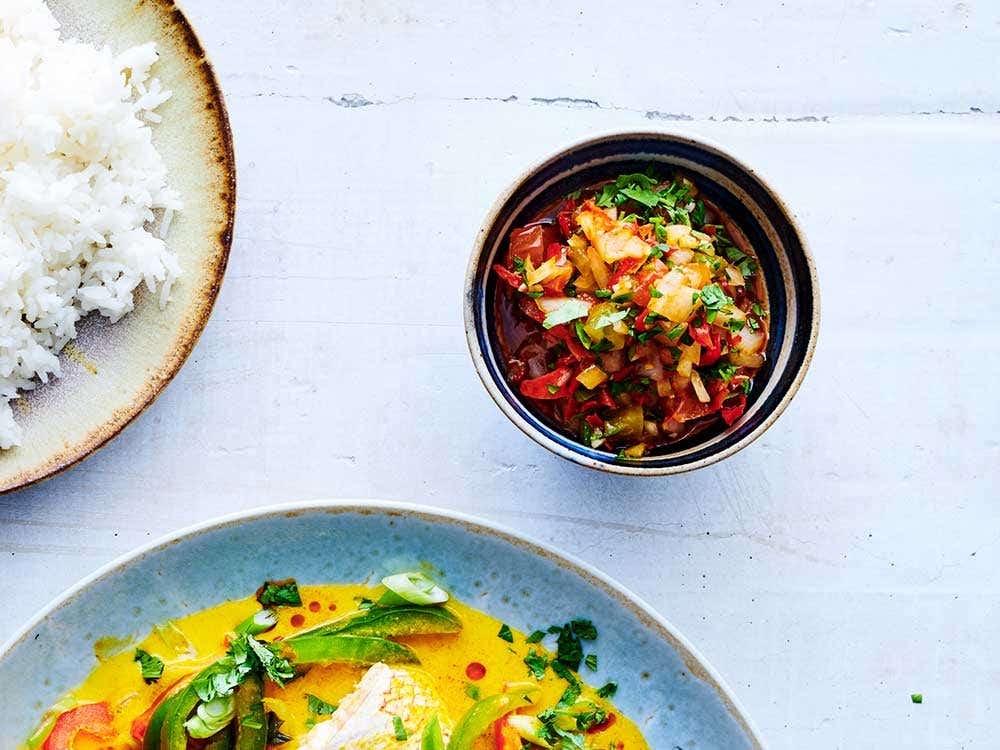
Keep Reading
Continue to Next Story
